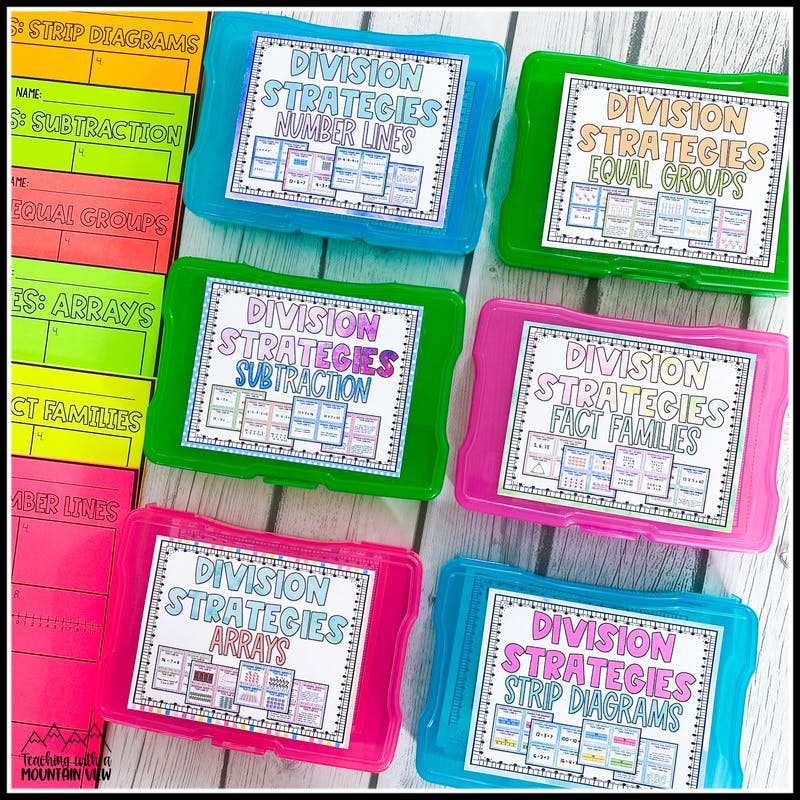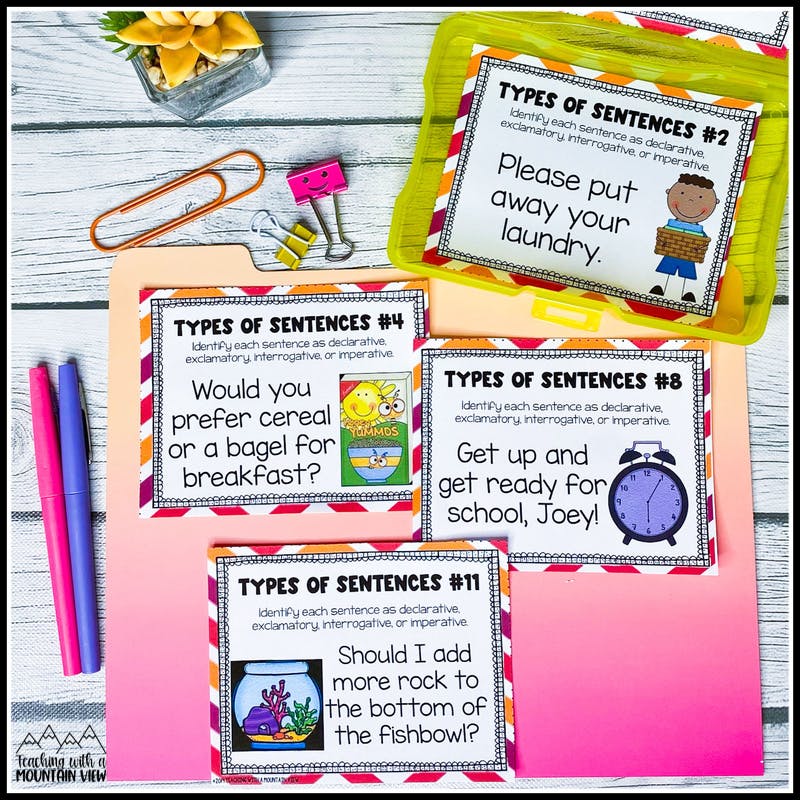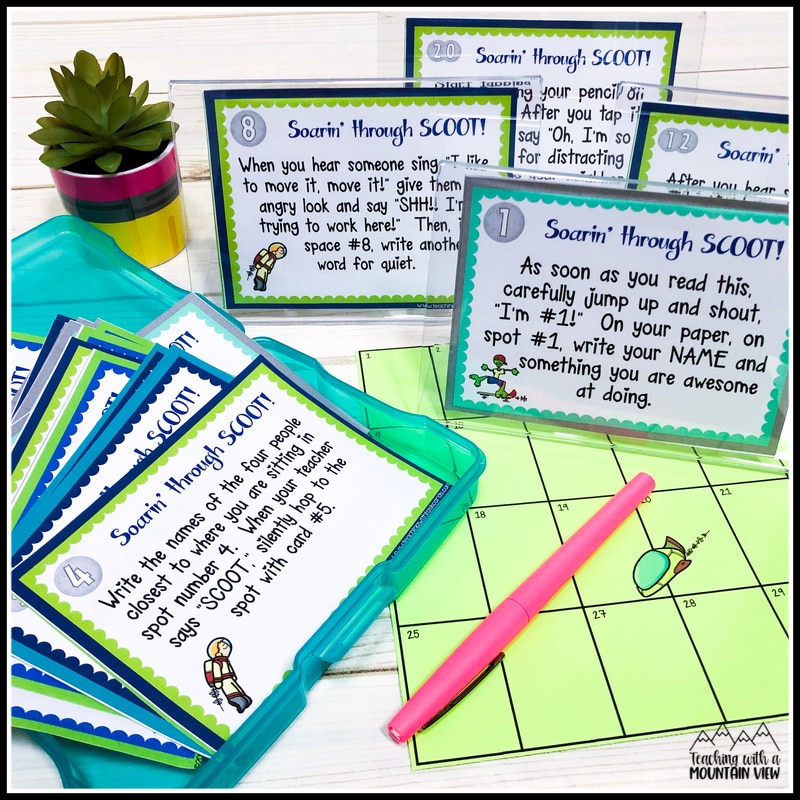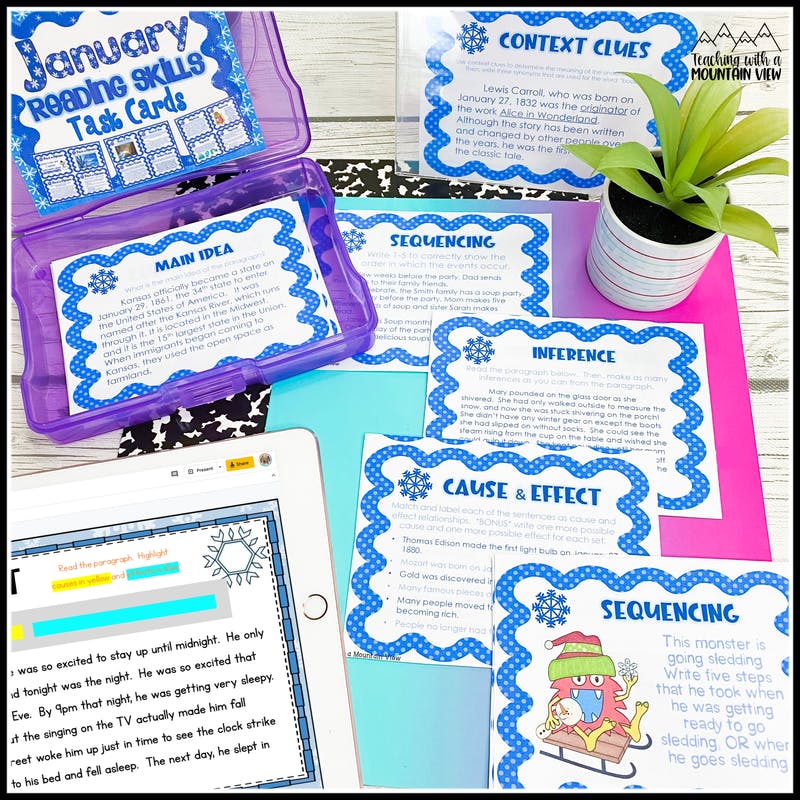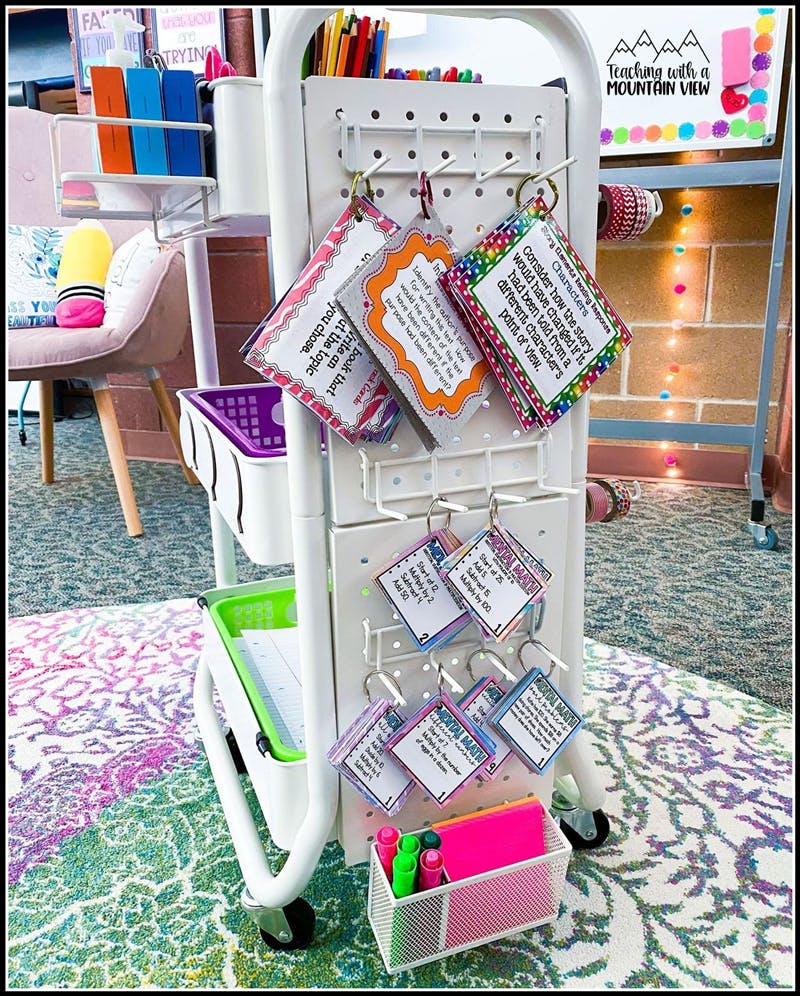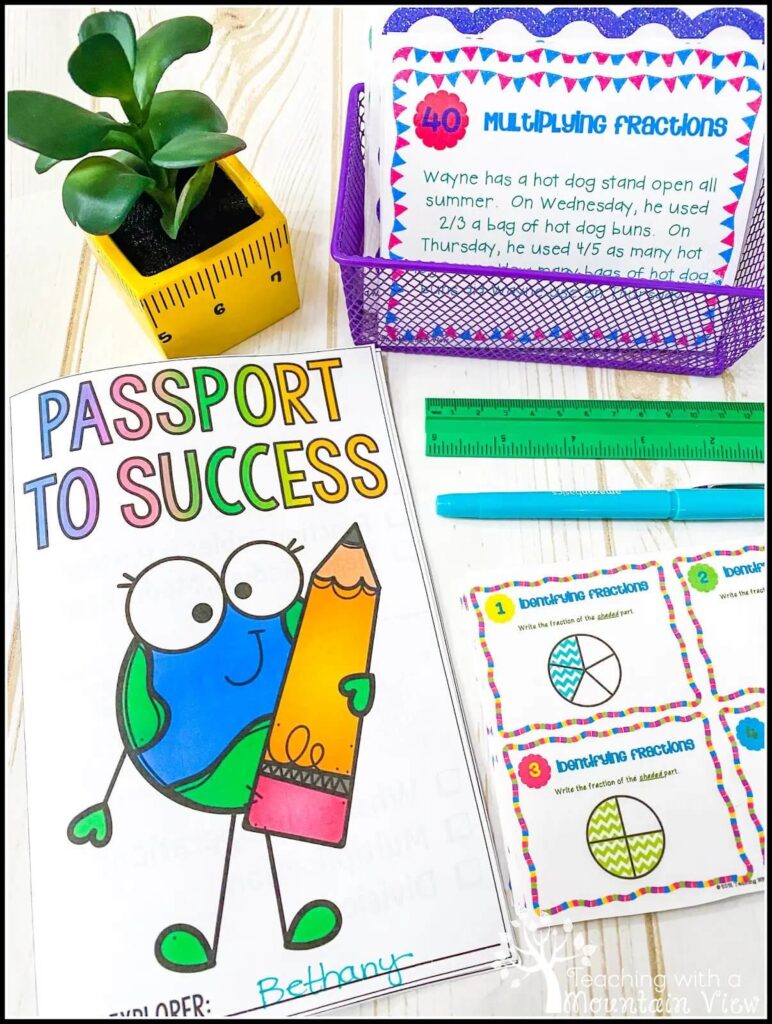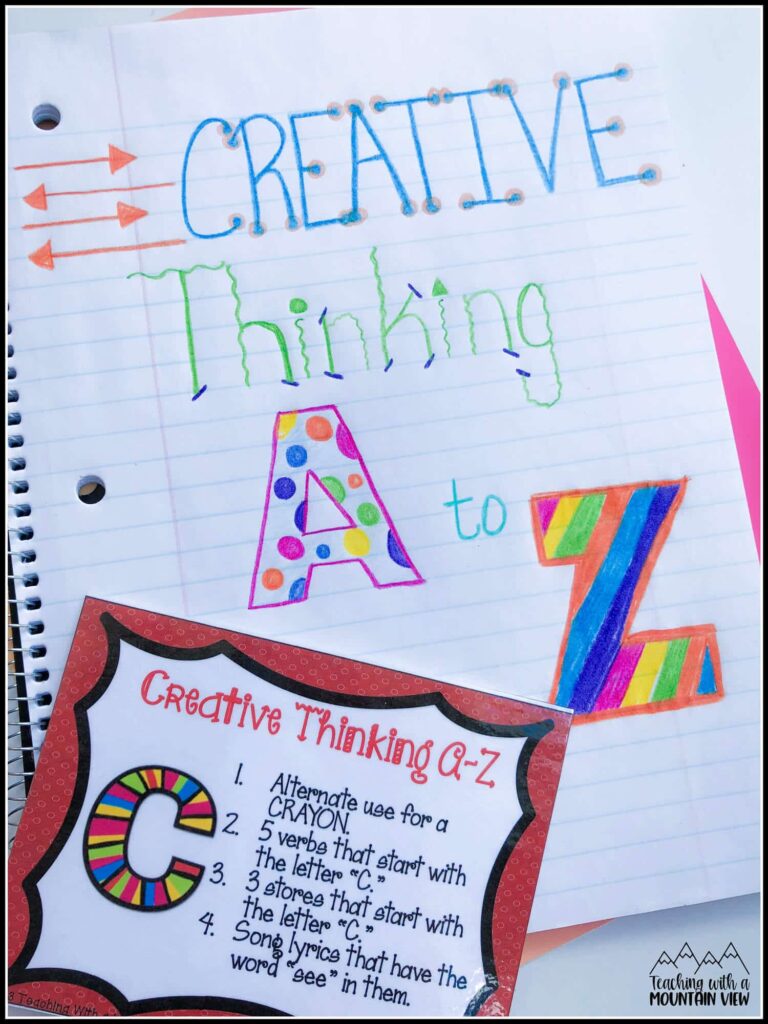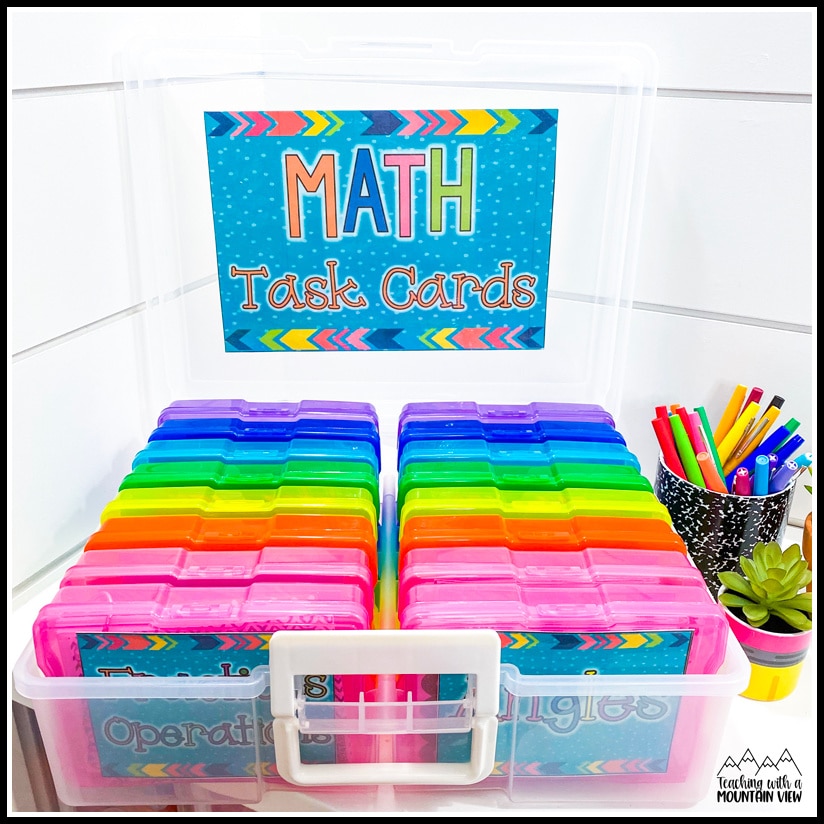- Literacy
- |
- Back to School
- |
- Math
- |
- Seasonal
- |
- Task Cards
8 Exciting Ways To Use Task Cards In Upper Elementary
By Mary Montero
Share This Post:
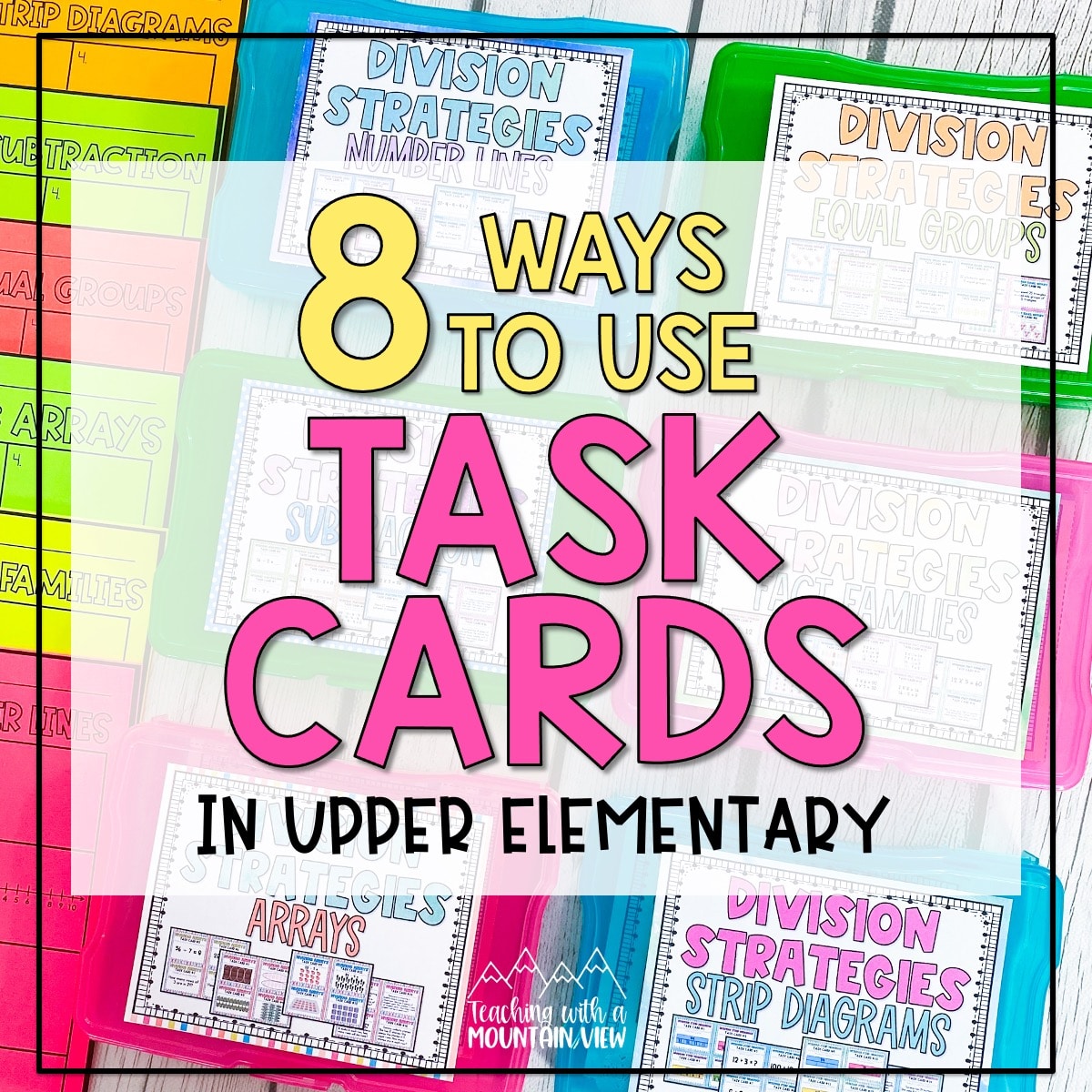
Can we talk about task cards for a minute? I’m sure you’re seeing them all over social media, and you may even own a few (or more than a few!) sets yourself… but are you getting the most out of them? Task cards are some of my favorite teaching resources for their versatility, so here are eight engaging ways to use them with your students, too.
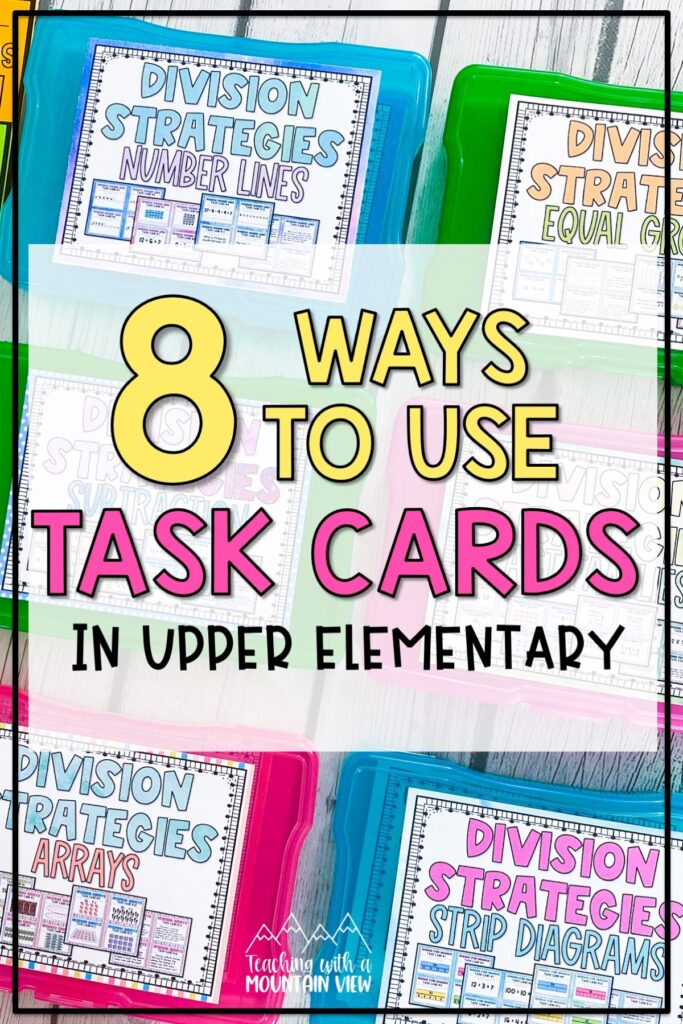
Differentiation
Task cards are the perfect tool for differentiation when you pick the card(s) that each student needs to work on the most. Too difficult? Leave it out. Too easy? Choose a more challenging card! Students can also work on different sets for remediation, on-level, and enrichment opportunities while everyone is still doing the “same” activity. For example, with this set of division task cards, students can practice different division skills as-needed. Some students can work on scaffolded division strategies while others are working on word problems.
Warm Ups or Exit Tickets
With all of my task cards being printable or digital, you can pass out or project a card for warm ups at the beginning of a lesson or as exit tickets at the end of a lesson. Doing these regularly is a great way to keep tabs on where your students are and how they’re progressing on the skills throughout each unit. These types of sentences task cards are great quick checks!
Games
Task cards allow students to get hands-on with learning. Place task cards around the room (or outside!) and set your students free to move while they cover important educational standards. Scoot is one way to practice skills and also give students the chance to get up and move around while still staying on task. Scoot is best played when all students are working on the same skills because each student will eventually solve every card. This post has complete directions for how to play and also includes a FREE set of cards.
Topple Blocks and board games are other fun way to use task cards for hands-on learning. The rules are simple and you can use almost any game students are familiar with. Connect Four, Candy Land, Chutes and Ladders, Sorry, etc. all will work. Each group of students uses a set of task cards (another great way to differentiate!), and each student has to answer a question on one of the cards before taking a turn on the game board. The rest of the group has to agree with the answer before they can move on. Each group also has a recording sheet that they turn in for accountability. I shared a closer look at using board games in this teaching point of view post or using Topple Blocks in this post.
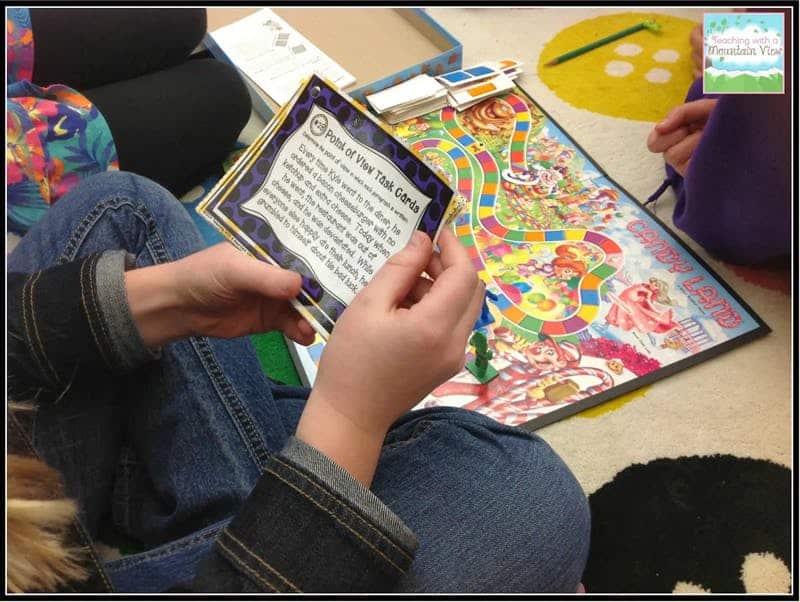
Independent Practice
If you print the task card sets with 2 sets (8 cards) per page, they make awesome little practice booklets. This is a great option for seat or center work across multiple days and helps prevent individual task cards from getting lost in the shuffle.
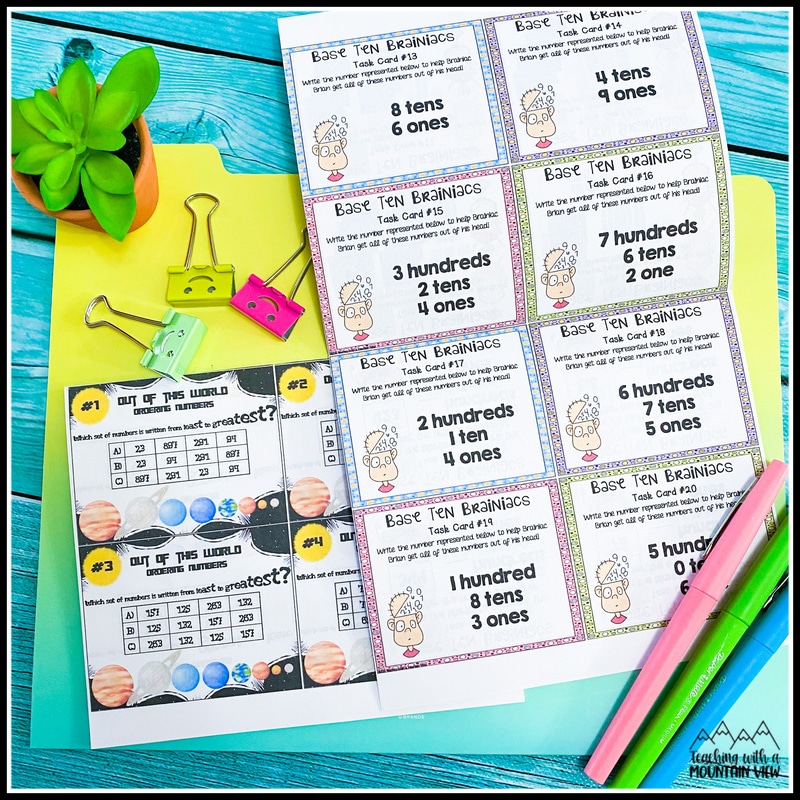
Centers and Rotations
Task cards are a great way to refresh your centers throughout the year. We use staple sets like the monthly reading skills or monthly fluency skills task cards all year long. These sets always work the same way, but they’re updated each month with a seasonal theme to keep things fresh. When students know exactly what to do during rotations, it makes my small group time that much more effective.
Small Groups
I keep several different sets of task cards right at my fingertips all year long. These FREE pre-reading task cards or these FREE open-ended reading response cards work for any book. For math, these mental math task cards are super handy. I keep tons of them right on my cart so I can pull them out with any group at any time.
Test Prep
Task cards make test prep rigorous and engaging. Students get a passport of tasks they have to complete for a variety of different topics. I love this because you can totally differentiate it. I usually end up with multiple different passports because students have different needs. I separate my task cards into concepts, and I usually put 2-3 sets in each concept area so that they get a VAST review of concepts. I do not use the entire set of task cards for this. I usually pick out 10-12 for students to complete from each set since it’s just a review. You can use the rest throughout the year! You can learn more and grab the FREE passport in this blog post.
Early Finishers
“I’m done. Now what?” How many times have we heard that dreaded question?? Task cards can be the solution all year long with meaningful critical thinking, literacy, and math practice. I shared our early finisher notebooks in this post. You can also grab this ULTIMATE early finisher and enrichment bundle to help.
BONUS: Task Card Organization Tips
As your collection of task cards grows, you’ll need a system to keep them organized. This low prep resources post has a lot of storage tips and pictures. So does this organization post.
How do YOU use task cards in your classroom? I’d love to hear your ideas. Join us in our FREE Inspired in Upper Elementary Facebook group to brainstorm with us.
Mary Montero
I’m so glad you are here. I’m a current gifted and talented teacher in a small town in Colorado, and I’ve been in education since 2009. My passion (other than my family and cookies) is for making teachers’ lives easier and classrooms more engaging.







